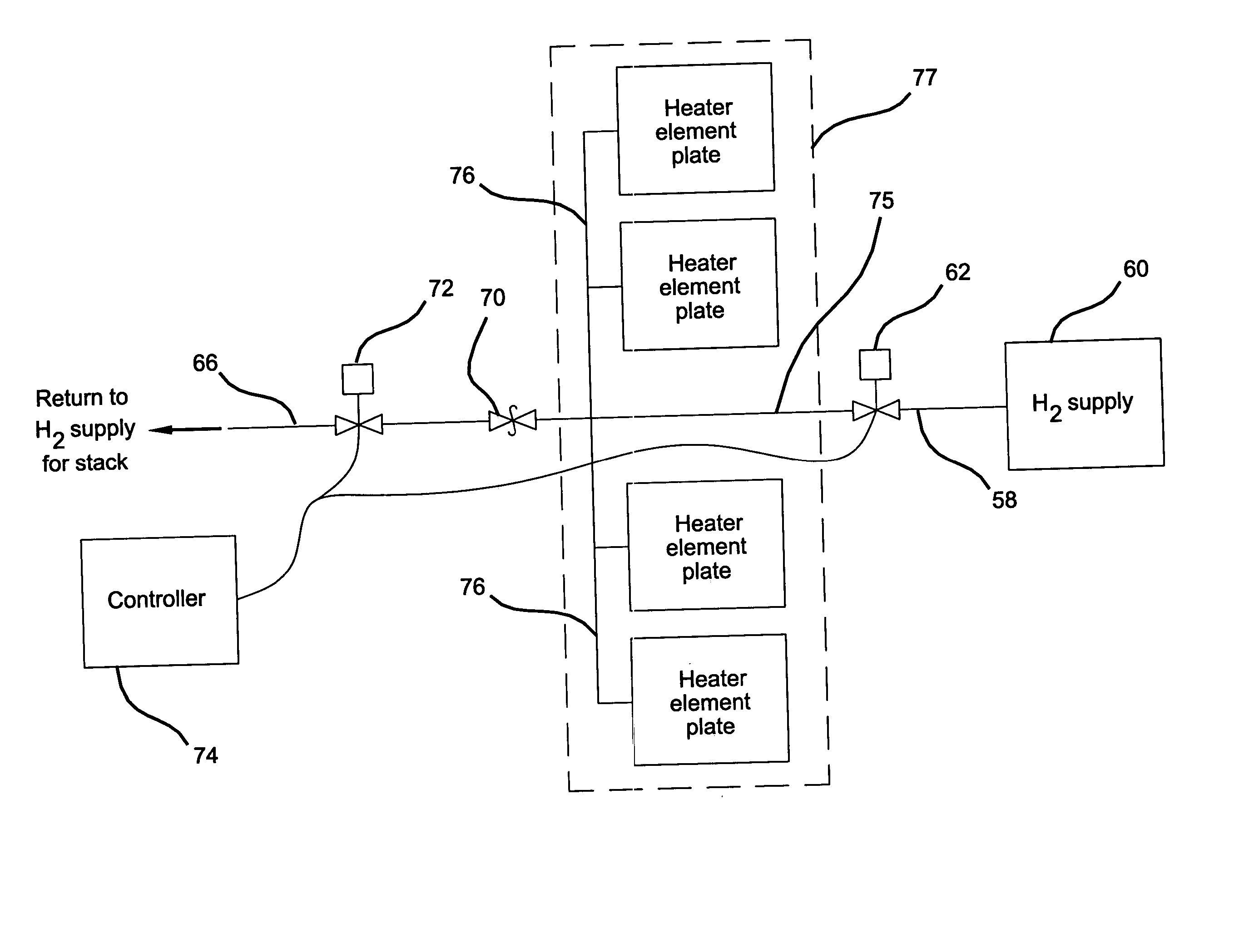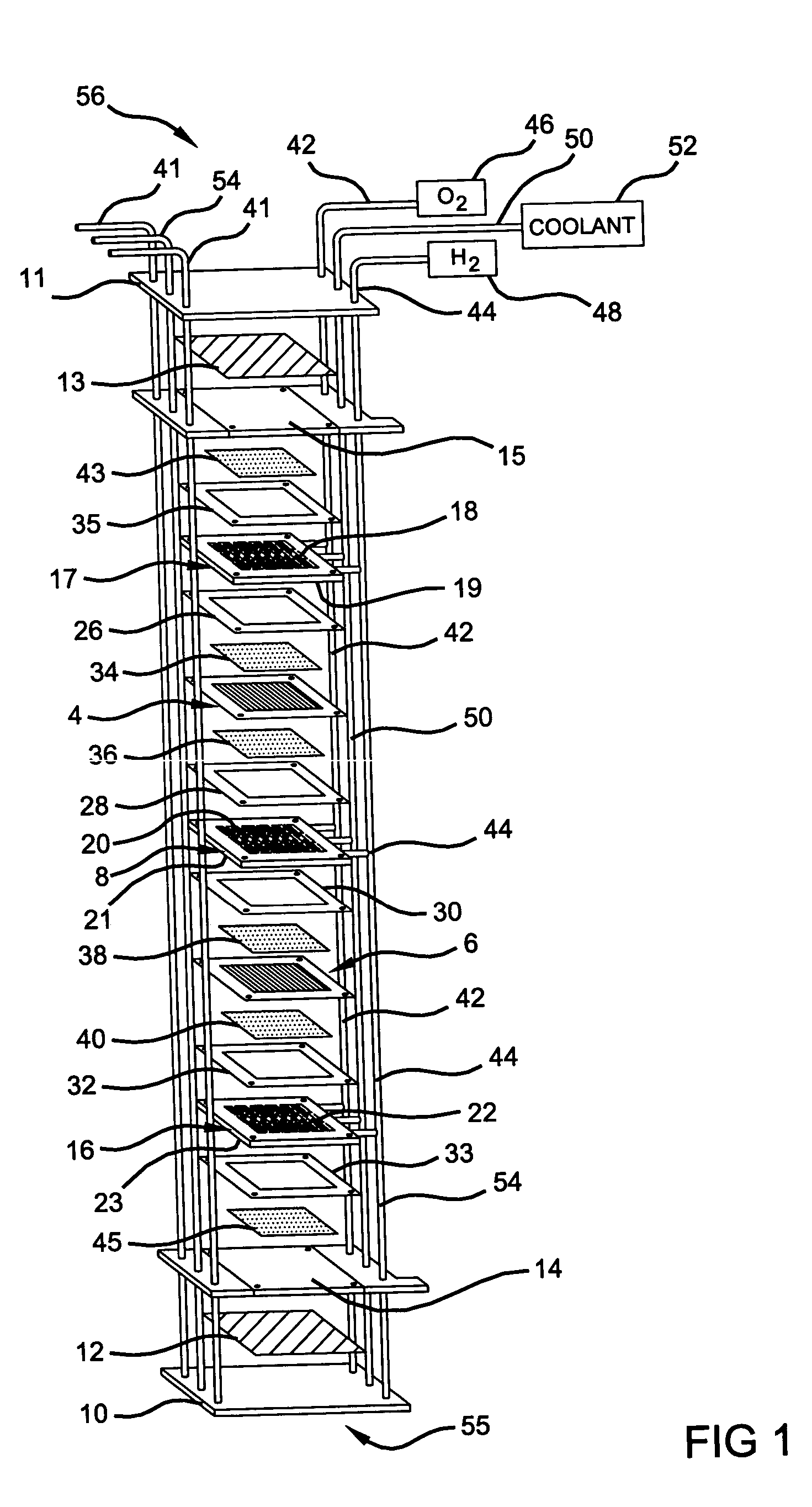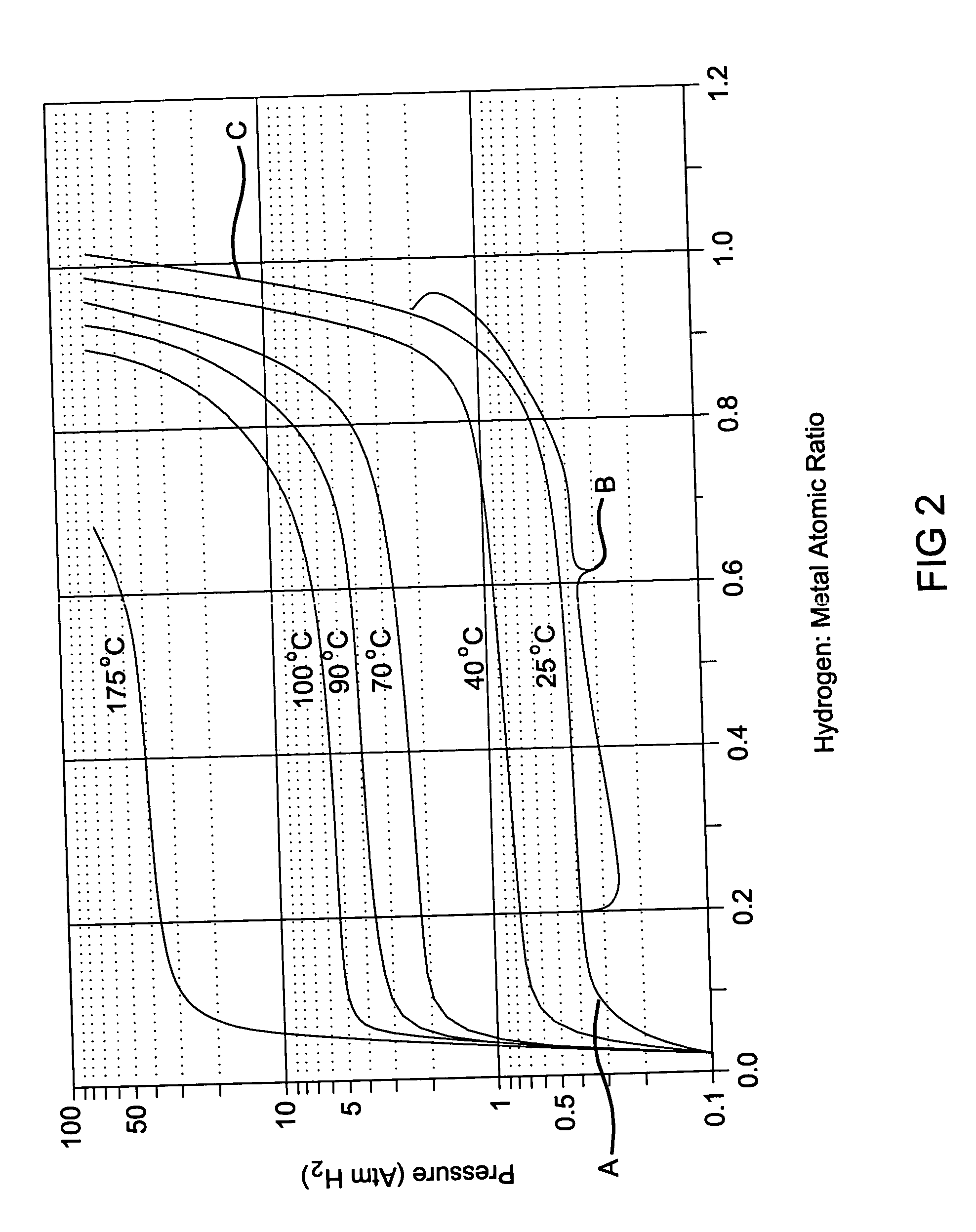Metal hydride heating element
a technology of metal hydride and heating element, which is applied in the direction of fuel cells, reactant parameter control, electrical apparatus, etc., can solve the problems of significantly reducing the electrochemical reaction rate at the mea and much more difficult rapid start-up
- Summary
- Abstract
- Description
- Claims
- Application Information
AI Technical Summary
Benefits of technology
Problems solved by technology
Method used
Image
Examples
example 1
A storage vessel for a heating plate element is formed from aluminum by cold extrusion. The thickness of the whole heater plate is approximately 8 mm. The heater element storage vessel preferably occupies the same dimension as a corresponding fuel cell active area, which has a dimension of 160 mm×209 mm. The semi-circular grooves are formed in the interior of two halves of the plate and have a diameter of 4 mm and are spaced 1 mm apart from one another. The two halves are joined by brazing.
During the start-up phase the heat demand of the stack is calculated to be 500 W for 1 minute. Thus, a single heater plate element should supply a total of 30 kJ of energy. The hydrogen absorption material metal alloy used is LaNi5, which is commercially available as either HY-Stor 205 or HYMAC 5 from Ergenics, Aldrich Chemical. The LaNi5 has an approximate density of 5 g / cm3 and a heat of formation of −30.8 kJ / mol at 1.8 atm and 25° C. The LaNi5 must store 0.974 mol H2 which is equal to 1.95 g...
PUM
| Property | Measurement | Unit |
|---|---|---|
| equilibrium pressure | aaaaa | aaaaa |
| equilibrium pressure | aaaaa | aaaaa |
| temperatures | aaaaa | aaaaa |
Abstract
Description
Claims
Application Information
 Login to View More
Login to View More - R&D
- Intellectual Property
- Life Sciences
- Materials
- Tech Scout
- Unparalleled Data Quality
- Higher Quality Content
- 60% Fewer Hallucinations
Browse by: Latest US Patents, China's latest patents, Technical Efficacy Thesaurus, Application Domain, Technology Topic, Popular Technical Reports.
© 2025 PatSnap. All rights reserved.Legal|Privacy policy|Modern Slavery Act Transparency Statement|Sitemap|About US| Contact US: help@patsnap.com



